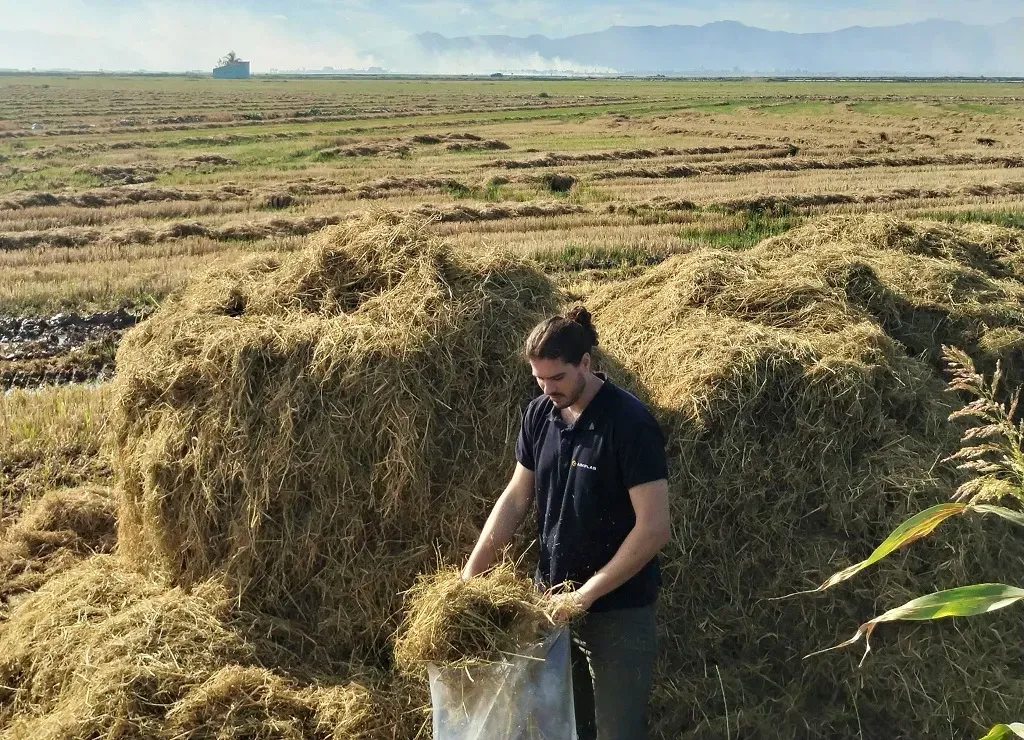
The management and treatment of lignocellulosic waste, i.e. plant waste from agriculture and forestry, is a major issue due to the large volume generated in the agri-food, wood and furniture sectors. The most common method currently in use is landfill, which is not sustainable in the long term and has negative environmental and health impacts.
The FUSTARISE Project, promoted by AIMPLAS aims to find more sustainable solutions for management and treatment of this waste by using solvent-free mechanochemical techniques to give it a second life in the form of sustainable bio-based products such as capsules and adhesives. For this purpose, the technology centre is collaborating with the companies MIARCO, which specializes in adhesive and abrasive products, LISART, which works on cutting-edge food-contact paper and packaging, and La Unió Llauradora i Ramadera, which represents more than 20,000 farmers and livestock breeders in the Valencian Community.
Mechanochemistry is a clean, and sustainable method with great benefits compared to the traditional processes currently used in industry. Among its advantages are the reduction in the consumption of solvents and reagents, some of which are toxic and harmful to the environment and life. Mechanochemistry also reduces energy and water consumption, the emission of gases into the atmosphere, and waste production.
As explained by Giacomo Marra, researcher in Mechanochemistry and Reactive Extrusion at AIMPLAS, “Thanks to this IVACE-funded project, we can move towards a circular economy based on waste lignocellulosic materials that can form part of the industrial context of the Valencian Community. Efficient and sustainable recovery of the lignin, hemicellulose and cellulose contained in this waste enables us to obtain high value-added products that can be exported to the market as biosustainable and eco-sustainable alternatives, thus reducing the environmental impact”.
Recovery of lignocellulosic waste
Marra went on to say, “The recovery of lignocellulosic waste using solvent-free methods is an innovative approach. Applying cleaner techniques is a promising alternative that can reduce dependence on traditional disposal methods and promote long-term competitiveness and sustainability. Moreover, the development of innovative products from this waste can replace conventional petroleum-based approaches, reduce dependence on fossil fuels and promote a more sustainable future”.
This goal will be achieved by developing, optimizing, comparing and scaling up lignocellulosic waste treatment processes using conventional, mechanochemical and bio-enzymatic techniques for efficient and sustainable recovery of lignin, hemicellulose and cellulose. The recovered biopolymers will be reprocessed to ultimately obtain different high value-added products.
Furthermore, the treatment processes developed will be scaled up to pre-industrial level so that these environmentally friendly technologies can easily reach waste production and management sectors as a competitive alternative to conventional methods.
This project is included in the IVACE aid programme aimed at technology centres in the Valencia Region for non-economic R&D projects carried out in collaboration with companies for the 2023 financial year, financed by the European Regional Development Fund (ERDF) of the European Union within the framework of the 2021-2027 Operational Programme.
Source
AIMPLAS Blog, press release, 2024-02-08.
Supplier
AIMPLAS (Asociación de Investigación de Materiales Plásticos y Conexas)
European Regional Development Fund
European Union
La Unió Llauradora i Ramadera (La Unio)
LISART
MIARCO
Share
Renewable Carbon News – Daily Newsletter
Subscribe to our daily email newsletter – the world's leading newsletter on renewable materials and chemicals













